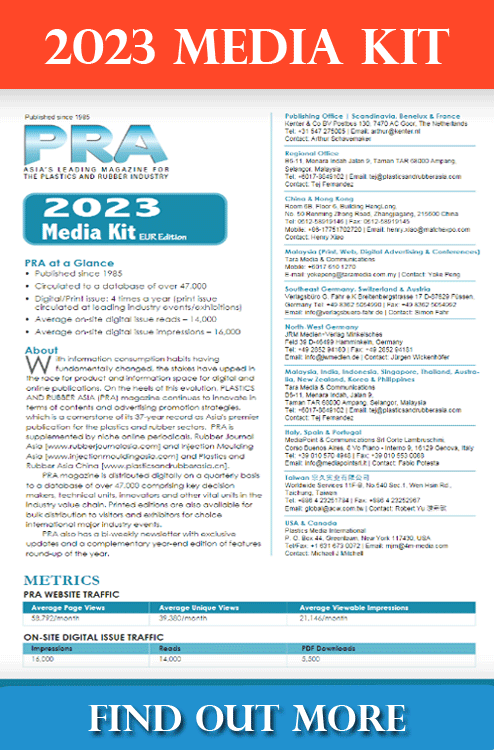EPA issues draft strategy for plastic pollution; to test oil from advanced recycling for impurities

With the US being one of the largest polluters globally, the US Environmental Protection Agency (EPA) has released a “Draft National Strategy to Prevent Plastic Pollution,” that builds upon EPA’s National Recycling Strategy and focuses on actions to reduce, reuse, collect, and capture plastic waste in the country.
Meanwhile, EPA has also said it will require companies that produce oil from advanced recycling to submit the product to the agency to test it for impurities, under the Toxic Substances Control Act for testing prior to approval of projects, and ongoing testing to ensure there is no variability in the plastic waste stream used to generate the pyrolysis oil.
The above measure is one of dozens of goals and objectives the EPA has outlined in a new draft federal strategy for preventing plastic pollution that was required by a law passed in 2020 aimed at keeping plastic waste and post-consumer materials out of waterways and oceans.
While the EPA has said it wants to promote "circular economy policies," which focus on the reuse of plastic waste, it said it will exclude "processes that convert solid waste to fuels, fuel ingredients, or energy from being considered as a recycling practice in this strategy."
Advanced recycling or pyrolysis or chemical recycling, is a set of reprocessing technologies that the plastics industry has touted as a solution to deal with the global scourge of plastic waste. It uses heat or chemicals to turn plastic waste into fuel or reclaimed resin to make new plastic.
The agency said that though it had welcomed "further discussion" on the technology when it released a separate draft national recycling plan in late 2021, it now "reaffirms that...it does not consider activities that convert non-hazardous solid waste to fuels or fuel substitutes or for energy production to be 'recycling' activities."
It says that “new and innovative approaches are necessary to reduce and recover plastic materials and improve economic, social, and environmental impacts”. With input from organisations, EPA says it has identified three key objectives for the strategy:
- Reduce pollution during plastic production.
- Improve post-use materials management.
- Prevent trash and micro/nanoplastics from entering waterways and remove escaped trash from the environment.
EPA adds that shifting to a circular approach for plastics management in the US involves actions surrounding:
- Understanding the effectiveness of programs and policies, and preventing plastic pollution through reducing, reusing, collecting, and capturing plastics from land-based sources.
- Improving US capacity to reuse and refill products.
- Increasing data availability and conducting life cycle assessments to understand the environmental, economic, social, and health impacts attributed to plastics.
- Addressing and improving consumer outreach and understanding of the proper management of plastic and other waste.
- Improving wastewater/stormwater management and capture systems.
EPA will collect public comments on this draft strategy through the docket in Regulations.gov for 45 days once notice is published in the Federal Register.
EPA asks the public to consider several key questions in the draft strategy when reviewing and commenting on it:
- Which actions are the most important and would have the greatest positive impact at the local, regional, national, and global levels? Consider:
- - Which actions can best protect human health and environmental
- - Which actions are most important to address environmental justice and climate change?
- - What are the key steps and milestones necessary to successfully implement the actions in the draft strategy?
- What are the most important roles and/or actions for federal agencies to lead?
- Is your organisation willing to lead an action or collaborate with others to implement the actions?
- - What factors would your organization consider when determining whether to lead an action?
- What are potential unintended consequences of the proposed actions that could impact communities considered overburdened or vulnerable, such as shifts in production or management methods?
- What key metrics and indicators should EPA use to measure progress in reducing plastic and other waste in waterways and oceans?
- What criteria should processes meet to be considered “recycling activities” (e.g., “plastics-to-plastics outputs are ‘recycling’ if these processes reduce the life cycle environmental impacts in comparison to traditional mechanical recycling”)?
- Are there other actions that should be included in the strategy?
- - Should EPA expand the scope of the strategy to include sea-based sources?
- - Should specific types of plastic products be targeted for reduction or reuse in this strategy?
It also requests for additional information or recommendations for EPA regarding these or other proposed actions in the draft strategy.
(PRA)
Subscribe to Get the Latest Updates from PRA Please click here
©2023 Plastics and Rubber Asia. All rights reserved.

©2023 Plastics and Rubber Asia. All rights reserved.
Home Terms & Conditions Privacy Policy Webmail Site Map About Us















